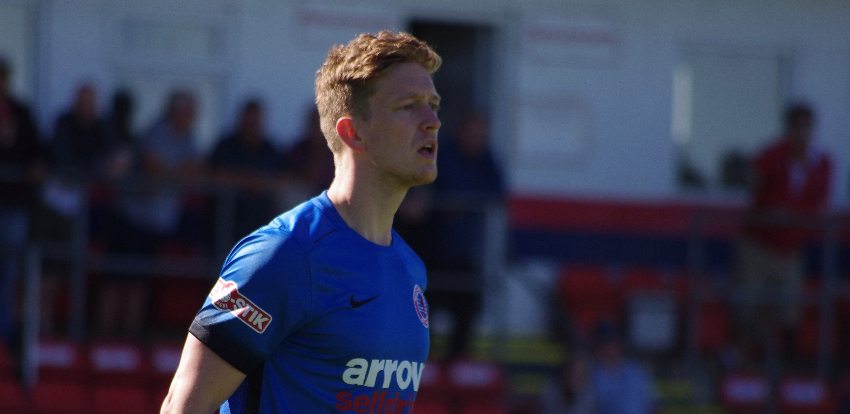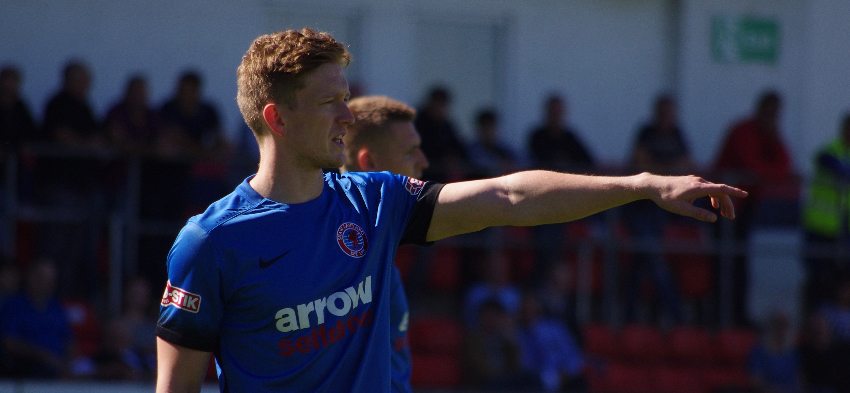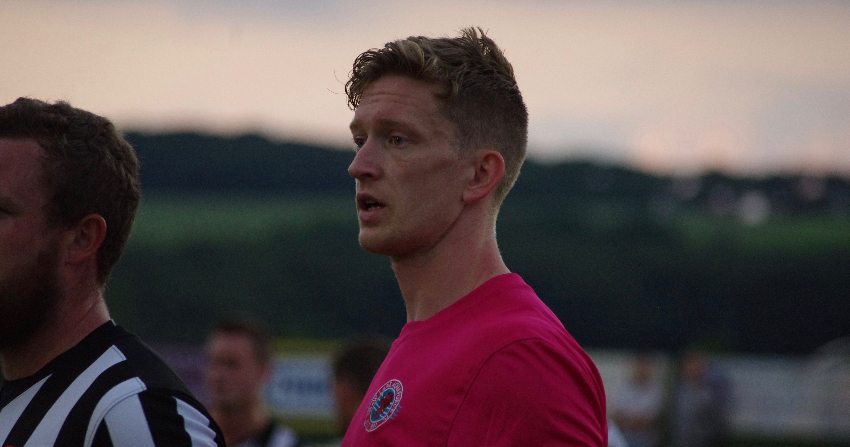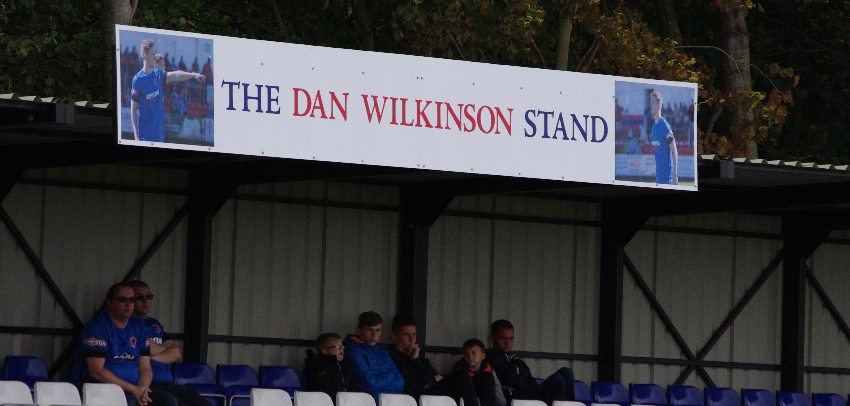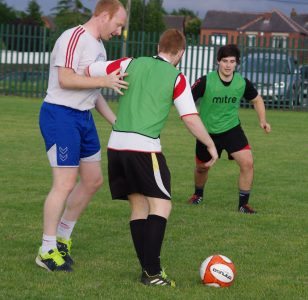
Non League clubs struggle to train during the winter months because a lot of facilities are booked up
It is that time of the year when the dark nights are here and clubs start to look for indoor or floodlit all-weather facilities for training.
Speak to many and it is a difficult task. Some clubs are lucky to have their own facilities. The majority do not and many struggle to find a training base.
Hiring courts at five-a-side centres, such as Goals Leeds on Kirkstall Road, can be a solution. But finding large FA or FIFA approved 3g pitches is problematic. Junior football clubs block booking to five-a-side leagues taking prime slots are factors.
“I can imagine finding a facility for the right kind of time and at the right cost being a real problem lower down, certainly in the NCEL,” says Stocksbridge Park Steels manager Chris Hilton.
“It is a big reason why teams don’t train. That’s not good because training is vital if you want to be successful.”
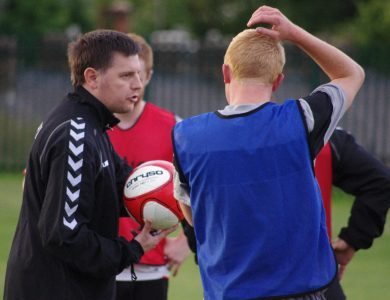
Chris Hilton leading a Stocksbridge training session in 2014
Stocksbridge have a good relationship with a facility away from Bracken Moor so training at a regular time is never a problem for Hilton. But he was not so lucky during his four-year stint in charge of Worsbrough Bridge.
“At Worsbrough, it was very difficult to get somewhere for the right time,” Hilton adds.
“We would train at six o’clock and not everyone would be there because of work and shift times. A lot of the time we would train in the nine until ten slot. The six until seven slot is the one that everyone wants, but because a lot of five-a-side leagues run at that time, you can’t get it
“Then there is the cost because it is expensive. You’re talking either £30 or £40 for an hour and some clubs can’t afford that. I was lucky at Worsbrough that I had a sponsor that covered some of it, but not all of it. The rest was usually made up by me and the players.”
Clubs struggling to find affordable and suitable 3g facilities is not a new one. In February 2015, then-Garforth Town manager Graham Nicholas became involved in a public spat with the club’s owners as his team were unable to train regularly. Cost and the lack of an appropriate nearby facility was the reason why.
Currently there are 697 FA or FIFA registered 3g pitches in England – a small figure when Germany has nearly 4000. Yorkshire has 81 (27 in the West Riding, 35 in Sheffield & Hallamshire, 12 in East Riding and seven in North Yorkshire).
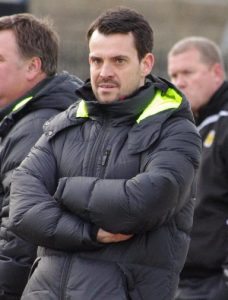
Maltby Main manager Spencer Fearn
Maltby Main use the FA approved 3g pitch at Maltby Academy for training.
Their manager Spencer Fearn is well-versed in the mechanics of football. He was once the owner of Scottish League club East Stirling, as well as the vice-chairman of Stockport County for a period.
Fearn is not surprised that clubs have problems finding facilities, because he sees it as part of a bigger problem. He believes there has been a lack of investment in facilities and coaches at grassroots for a long time.
He sees it as a systematic failure and says that other countries are miles ahead of England, including Iceland who beat the National Team in this year’s European Championships.
“There needs to be more investment in facilities,” Fearn says.
“We are fortunate in Rotherham because we use Maltby Academy which is a new 3g pitch, but there is pretty nothing else out there.
“If we couldn’t get Maltby Academy, we’re where people walk their dogs. They’re horrendous pitches, but they’re the only other pitches that we could train on.
“I think the problem we have in England is the facilities.
“People says we haven’t got enough qualified coaches, but facilities is where it starts because if you haven’t got the facilities you’re not going to get the coaches and the players.
“I also coach an under 11s team and you look at some of the places where they train. They are not going to develop as players playing in mud-baths every week.
“You look at Holland and Spain. Alright Spain has the climate. But there are some good facilities and that’s why they are producing some excellent players.
“If you look at Norway, kids go to their local club after school and clubs are a big focal point of their communities.
“They have 3g pitches everywhere. They have done it in Iceland, who of course beat us in the Euros. They have invested in grassroots and provided clubhouses, pitches.
“They have all these wonderful facilities and was it a great surprise they beat us? I have a colleague over there and he said ‘we’ll beat you’ and it is because they have invested in grassroots.”
There may be some good news on the horizon for clubs. The FA have previously announced that they want to increase the number of approved 3g pitches to over 1000 by 2020.
That aim received a boost on Monday when the FA agreed a new overseas broadcasting rights deal for the FA Cup – reportedly worth £1bn – from the 2018/19.
FA chief executive Martin Glenn says would enable increased investment in pitches, facilities and participation.
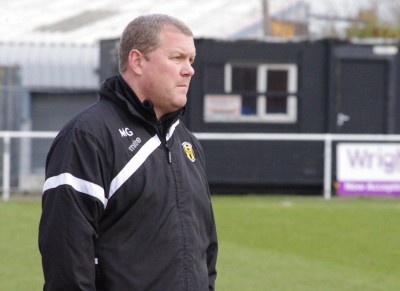
Handsworth Parramore manager Mick Godber
But it won’t happen overnight and it may be too late for Mick Godber and his young Dinnington Town players. As well as running the Handsworth Parramore first team, Godber also manages his son’s under 10s team.
“Every single village or town should have a floodlight 3g pitch paid for by the Premier League or the FA,” Godber says.
“They have the money to do it and there should be more money filtered down to give kids the opportunity to play football. There’s no facilities where I live. There’s a pitch where Dinnington Town play, but there’s no kids facilities.
“There’s a school which we hire and pay to use. It is a considerable amount, that’s nothing against the school, it is just how it is
“How do you get kids off their XBOXES and iPads? The only way is giving them facilities to run about in.”
It is clear that the problems that many semi-professional clubs face are just one part of a bigger nationwide problem.

